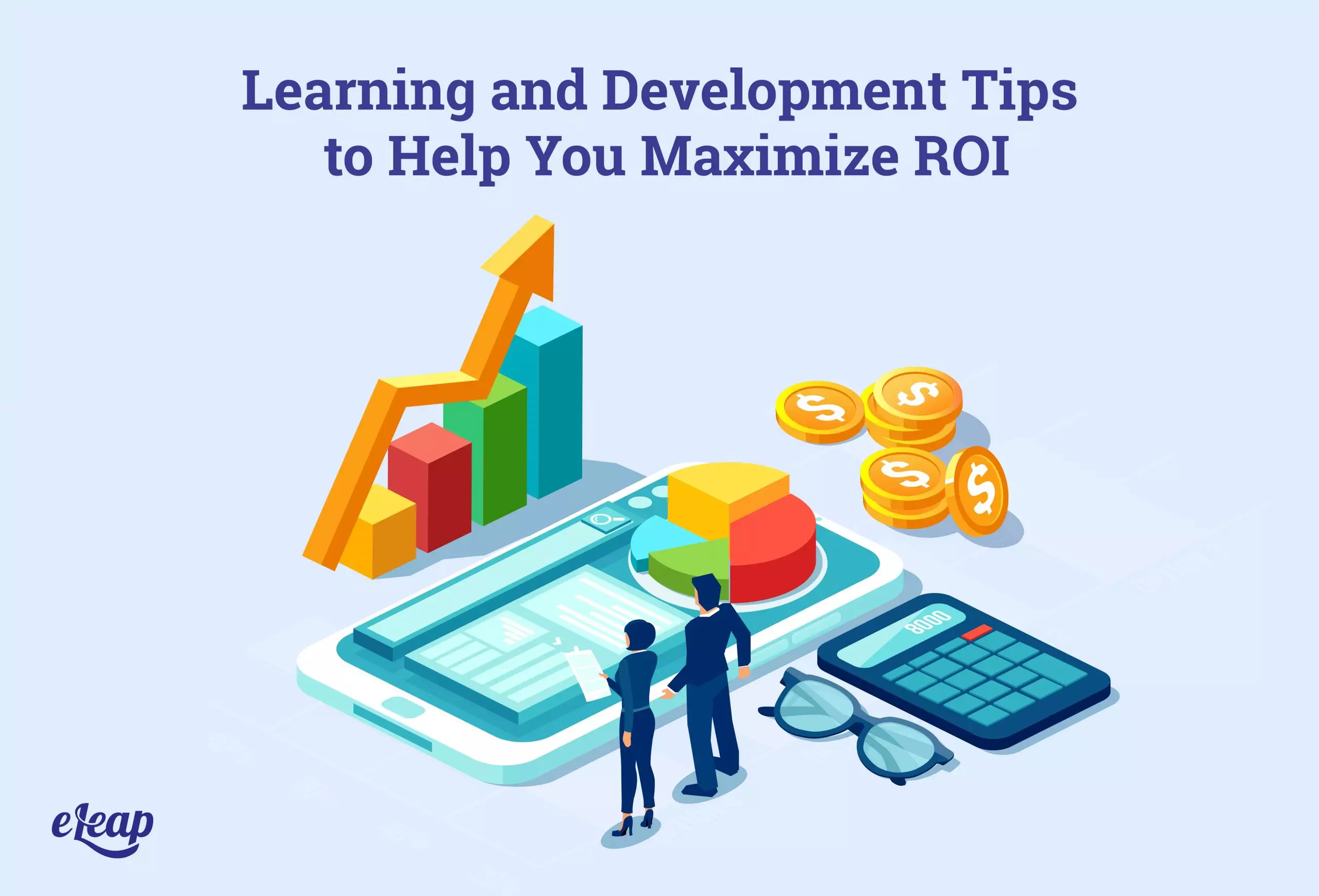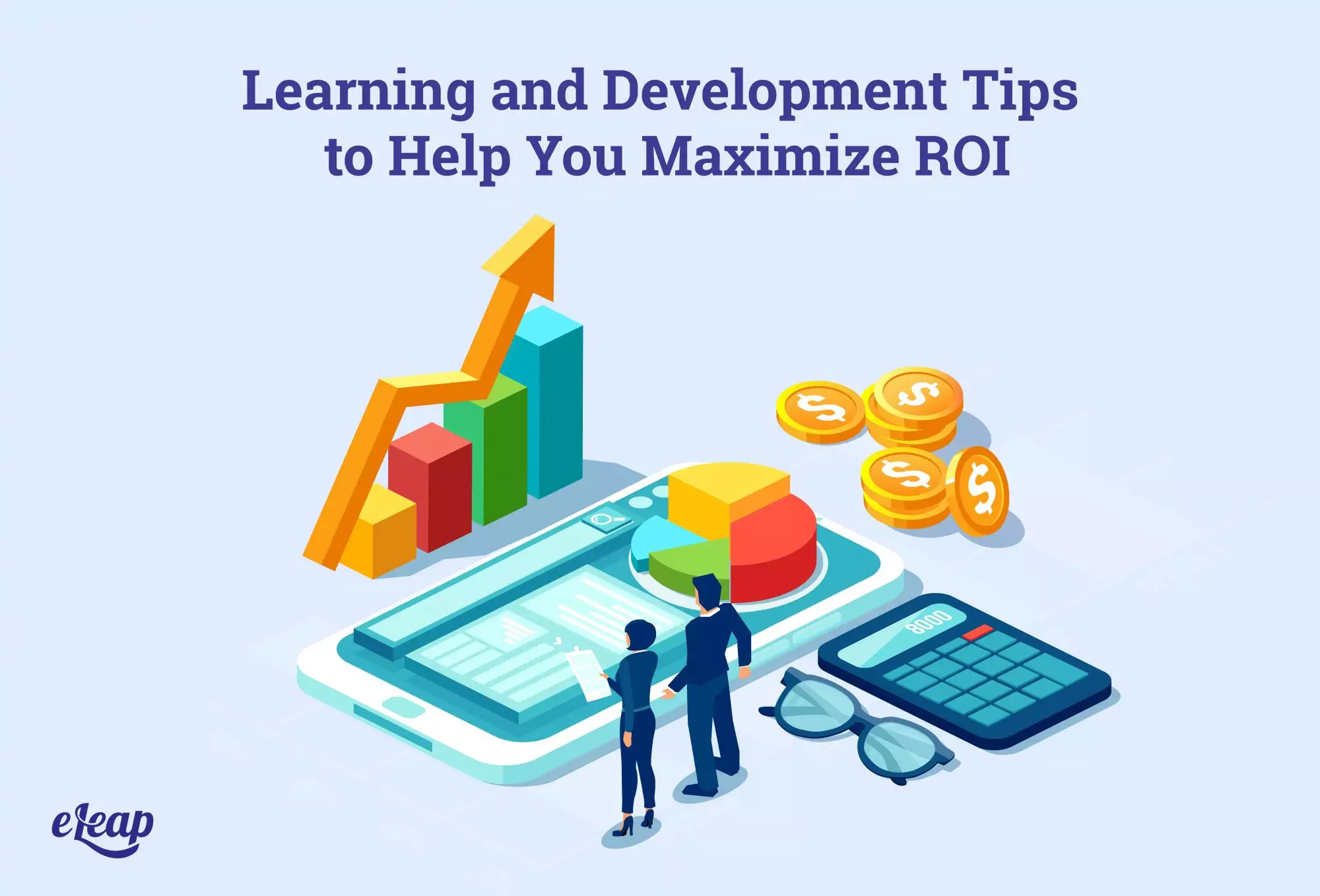Learning and Development Tips to Help You Maximize ROI

It would be nice if Learning and Development could exist for no other purpose than to help employees become their best selves. However, it is intrinsically tied to your budget and, if you don’t see the return on that investment you need, it can be tempting to make drastic changes, even cuts to your training initiatives.
Balancing development with ROI can be pretty challenging, even for larger companies with deep pockets and the ability to pursue lengthy timelines. However, it doesn’t have to be impossible, even for small firms with limited budgets and time pressure. The tips we’ve compiled here will help you maximize the ROI your learning and development delivers.

Know the Point
Learning and development for the sake of learning and development is never a good idea. It’s like being on a treadmill. Sure, you’re getting exercise, but you’re not actually going anywhere. Instead, make sure that there’s a point to the L&D efforts within your organization.
What are you developing your staff toward? What are the goals you’re working to reach? If you know what those are, then you can easily track progress and peg it on the path toward that goal. This can help you see ROI even before there’s any sort of financial return. After all, a return on investment doesn’t have to be monetary to be impactful.
With that being said, knowing the point of the training implies that you have an overarching strategy. Too many business owners lack that plan, though. They’re going through the motions, implementing training because “it’s a good idea”, or because their competitors are doing it. Worse, you might not have anything in place other than a requirement to handle things like mandatory corporate training and CE mandated by the government or industry regulations.
You need to approach L&D with a strategy in hand. Where do you want to go? How will you get there? What skills gaps do you need to close? What talented team members do you want to keep advancing to ensure that you’re able to make progress toward your organizational goals?
Give Your Employees Some Degree of Control
If you want to see a significant return on your investment in terms of learning and development, put your employees in control of their own fate. No, that doesn’t mean that you should allow them to choose every piece of content they complete, but it does mean you should give them some leeway to chart their course.
What do they want to do? Where do they want to go, professionally speaking? What’s their career development path look like in their head? Let them lay that all out and then create a path that helps them go from where they are now to where they want to be.
It’s your job to support them along that path. You’ll find that as long as you’re able to help them become better both professionally and personally, they’ll deliver more and more value to the company. You’ll be able to measure that return on investment in several ways, including:
- Improved productivity
- Improved profitability
- Improved employee retention
- Reduced onboarding and training costs
- Retention of key talent, enabling better competition in the market
Go Beyond Passive Training
Yes, video content is very popular. Sure, text-based content is easy to create and affordable. No, those aren’t the end of what you should be doing when it comes to creating and delivering training content. You need to break out of the passive mold and take advantage of what a modern LMS can deliver.
For instance, with virtual reality and augmented reality, you can create truly immersive, interactive experiences. These technologies offer the ability to deliver hands-on training in a completely virtual way, allowing you to train people even if they’re located very far from your facility.
Other options include creating gamified content that is both interactive and ties into your team’s competitive spirit. Leaderboards are just one example here. There are tons of other ways you can use gamified content to push a better ROI through measurable training results.
Mobile Matters
You’ve probably heard this one before, but we’re going to cover it anyway. When you open up your LMS to mobile learning, you empower your employees, increase the speed of training, and generate a significantly better return on your investment. It’s as simple as that.
Don’t Train for Skills Alone
It’s tempting to create L&D content based on skills gap analyses and the like. That’s fine, but don’t let it be the end of your efforts. You need to consider the entire person in the equation, not just their professional capabilities. What does that mean?
Simply put, you need to help your people develop both personally and professionally. Train for both hard skills and soft. The return on your investment will be much better than you might think.
Remember that people are just that – people. Your team isn’t a collection of skillsets. It’s a collection of individuals who come together to do their jobs. That requires more than just productivity-oriented capabilities. They need to be able to work together, to understand one another, and to communicate well. You can only achieve that when you train the entire person, not just a set of skills.
Make Training Part of Your Culture
One-off training sessions are fine for mandatory corporate training. However, they’re not the right path if you want to generate the best possible return. Why is that?
When training happens on an ad-hoc basis, the information is usually not retained. What’s more, your people probably look at the training as something they have to get through to get it over and done with.
Instead, make training a part of your culture. Cultivate a love of learning in your team members and they’ll pursue it on their own, both at work and in their personal lives. The result? A much stronger team that will help propel the business to new heights.